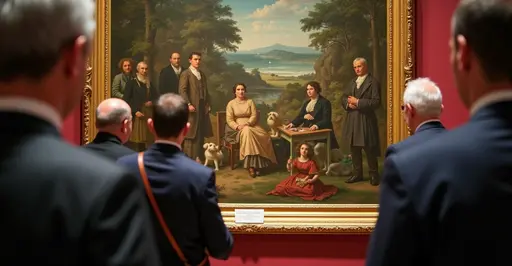
The Digital Revolution in Fine Art Markets
The global art market is undergoing a seismic shift as traditional auction houses embrace blockchain technology and NFT platforms to offer tokenized ownership of fine art masterpieces. What began as a niche digital art phenomenon has now evolved into a sophisticated system for fractional ownership and provenance tracking of physical artworks worth millions.
Major Auction Houses Lead the Charge
Sotheby's and Christie's, the world's leading auction houses, have established dedicated digital art departments that are pioneering the tokenization of physical artworks. Sotheby's launched its "Metaverse" platform in 2021, creating a premier destination for NFTs and digital art that has since expanded to include tokenized representations of physical pieces.
Michael Bouhanna, Vice-President and Head of Digital Art and NFTs at Sotheby's, explains: "We're bridging centuries-old art traditions with cutting-edge technology. Tokenization allows us to democratize access to blue-chip artworks while maintaining the highest standards of authentication and provenance."
How Tokenized Art Ownership Works
The process involves creating a non-fungible token (NFT) that represents either full or fractional ownership of a physical artwork. Each token contains detailed information about the piece, including high-resolution images, provenance history, condition reports, and authentication certificates. The artwork itself remains in climate-controlled storage while ownership rights are traded on blockchain platforms.
This system offers several advantages:
- Fractional ownership opportunities for smaller investors
- Transparent and immutable ownership records
- 24/7 global trading accessibility
- Reduced transaction costs compared to traditional art sales
Record-Breaking Sales and Market Validation
The market has already witnessed extraordinary validation of this model. In 2021, Sotheby's achieved several record-breaking sales, including a Bored Ape Yacht Club NFT selling for $3.4 million and a Cryptopunk achieving $11.7 million. These digital-native successes paved the way for physical art tokenization.
Christie's made history with the first NFT sale by a major auction house when Beeple's "Everydays: The First 5000 Days" sold for $69.3 million in March 2021. This landmark event demonstrated the market's appetite for digitally-native art and set the stage for physical art tokenization.
Regulatory Framework and Authentication Challenges
Despite the excitement, significant challenges remain. The legal framework for tokenized art ownership is still evolving, with questions about intellectual property rights, copyright transfer, and international regulations. As legal scholar Rebecca Tushnet notes, "The purchaser acquires whatever the art world thinks they have acquired. They definitely do not own the copyright to the underlying work unless it is explicitly transferred."
Authentication remains paramount. Auction houses are implementing multi-layered verification processes involving art experts, forensic analysis, and blockchain technology to ensure each tokenized artwork's authenticity.
Environmental Considerations and Sustainability
The art world is also addressing environmental concerns associated with blockchain technology. Many platforms are transitioning to more energy-efficient consensus mechanisms, and some auction houses are implementing carbon offset programs for NFT transactions.
The Future of Art Collecting
Industry experts predict that tokenization will fundamentally reshape art collecting. "We're moving from exclusive ownership to accessible investment," says Jaclyn Lavy, Associate Specialist in Digital Art Sales at Sotheby's. "Tokenization allows art enthusiasts at various investment levels to participate in the blue-chip art market."
The technology also enables new revenue streams for artists through smart contracts that automatically pay royalties on secondary market sales, addressing long-standing issues in the traditional art market.
As the market matures, we can expect to see more sophisticated financial products based on tokenized art, including art-backed loans, derivatives, and investment funds. The fusion of centuries-old art traditions with blockchain innovation is creating a more transparent, accessible, and dynamic art market for the digital age.

 Nederlands
Nederlands
 English
English
 Français
Français
 Deutsch
Deutsch
 Español
Español
 Português
Português








